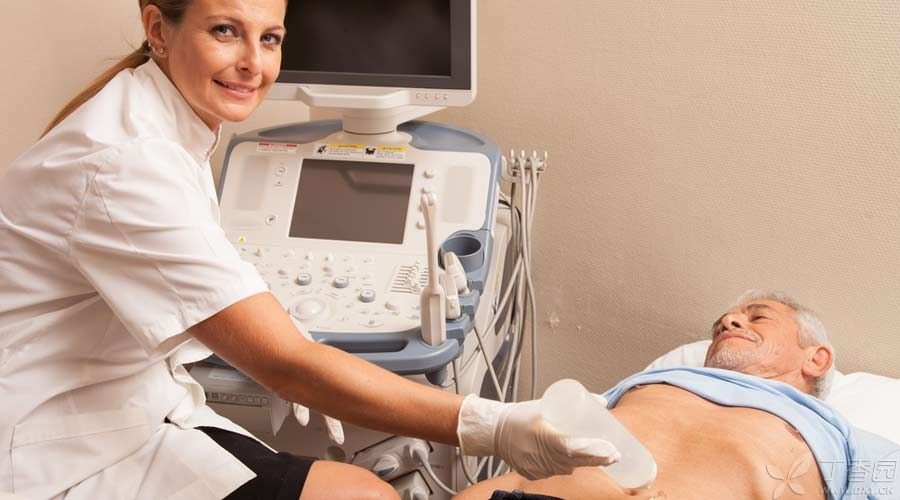
With the enhancement of people’s health awareness, more and more people have formed the habit of routine physical examination every year. Many people will encounter mild abnormalities of one kind or another after receiving the physical examination report, such as: visceral B-ultrasound prompt [space occupying] [stones] and so on, [it is recommended to go to a specialist for further diagnosis and treatment].
And then, there will be quite a number of people who worry too much, feel uncomfortable, search indiscriminately on the Internet, and occasionally fall into the erroneous zone of small advertisements in an unguarded moment.
I often met some friends in the clinic. I traveled thousands of miles to Beijing to find [scalpers] and hung up the expert number. As a result, the expert answered in a few words, saying that it was just a small problem that I didn’t have to worry about at all. However, I spent a lot of energy and financial resources, which was really unnecessary.
This article will simply popularize the four common benign diseases of liver and gallbladder system. If you encounter them in future physical examination, please do not worry too much!
Fatty liver
Many people, including young people around the age of 30, will write [fatty liver] on the B-ultrasound report of physical examination. Fatty liver used to be far away from the Chinese, but with the development of economy, this [rich and noble disease] will follow.
Generally speaking, fatty liver is the deposition of fat in liver cells, causing the liver to look less ruddy and delicate and become greasy and tough.
There are two most common types of fatty liver:
- One is fatty liver caused by high blood sugar and blood lipid, which is more common in fat people. There is also a kind of person who is not obese, but has a lot of social activities and often drinks alcohol. Alcohol promotes fat deposition in hepatocytes. The professional term is called [alcoholic fatty liver].
In addition, drug side effects, hepatitis or malnutrition can also lead to fatty liver.
As the disease is becoming more and more popular, many drug-free dealers have come up with the idea of selling this tea and that medicine on TV and online, claiming to treat fatty liver. Patients often spend a lot of money but do not work.
In fact, the best treatment for mild simple fatty liver is to control diet, abstain from alcohol and exercise.
Hepatic cyst
Liver cyst, in common terms, means that there is a round cyst cavity in the liver that contains liquid.
According to the number, it can be divided into single and multiple. Hepatic cyst is a benign liver disease.
Generally found liver cysts do not need to be treated, only cysts are so large that they are compressed to adjacent organs (such as compressing the stomach, causing obvious fullness after meals and other discomfort), and only need to be treated. Even if it is treated, it is usually possible to pass minimally invasive surgery, so don’t worry too much.
There is only one rare case-polycystic liver, which must require further consultation with a specialist.

Hepatic hemangioma
The so-called hemangioma is a congenital developmental malformation derived from blood vessels, which can occur in many parts of the whole body and occur on the liver. It is called hepatic hemangioma.
Hemangioma is also a benign disease. Previous medical views believe that rupture of hemangioma will lead to uncontrollable massive hemorrhage. Therefore, once checked out, surgical resection is required. However, in the past ten years, a unified understanding has been formed at home and abroad. Hepatic hemangioma is a very tough tumor body. Unless the trauma is directly punctured, no report of spontaneous rupture has been seen. Therefore, intervention indications have changed, and asymptomatic hemangioma can be reviewed regularly by B-ultrasound observation.
However, hepatic hemangioma will grow up, and some will oppress adjacent organs, so surgical resection should be considered. However, if hemangioma is very large, it is recommended that surgery must be carried out in the hepatobiliary center of a large hospital.
Polypoid lesion of gallbladder
The polypoid lesion of the gallbladder reported by B-ultrasonography, Most of them are caused by three reasons: Gallbladder polyps, cholesterol crystals and gallstones attached to the gallbladder wall. For a single gallbladder polyp-like lesion greater than 1 cm, accompanied by gallstones and cholecystitis symptoms or due to gallbladder polyps and bear a heavy ideological burden, affecting normal work and life, surgery is usually recommended. In addition, all should not be operated immediately, but need to recheck color Doppler ultrasound every 3-6 months.
Patients usually have such questions: Can gallbladder be preserved by removing gallbladder polyps? Whether it can be preserved depends on the gallbladder [has the final say]. If the gallbladder has shrunk, its function is very poor or the possibility of canceration is suspected, then don’t leave it.
In fact, most people do not affect their normal life after their gallbladder is removed. Please trust your doctor, who will weigh whether to remove the gallbladder or not.
Summary
Only by scientifically understanding the above four common liver and gallbladder system abnormalities can we scientifically face them, reduce unnecessary tension and waste.
However, after all, it is abnormal and cannot be completely ignored, so the last sentence is [regular observation, outpatient follow-up].
Editor: Huang Lijia
Author: Wang Xiaoman
Copyright Clove Garden All Rights Reserved, No Reprinting Without Permission
